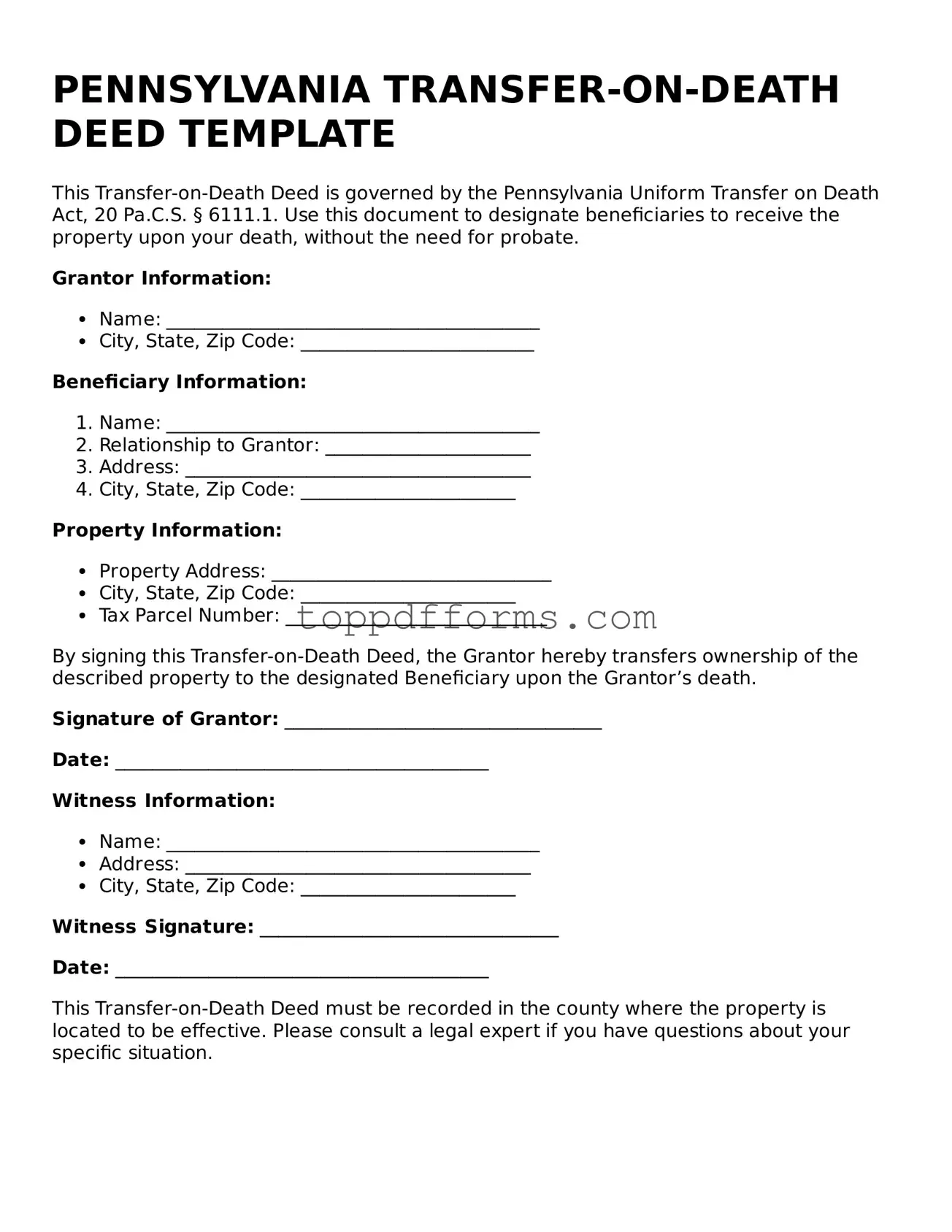What is a Transfer-on-Death Deed in Pennsylvania?
A Transfer-on-Death Deed (TOD Deed) in Pennsylvania allows an individual to transfer real estate to a beneficiary upon their death without going through probate. This deed provides a straightforward way to pass property to heirs, ensuring that the property is directly transferred to the designated beneficiary upon the owner's death. It is important to note that the property does not become part of the deceased's estate, which can simplify the transfer process and reduce associated costs.
How do I create a Transfer-on-Death Deed?
To create a Transfer-on-Death Deed, the property owner must complete the appropriate form, which includes details such as the owner's name, the beneficiary's name, and a description of the property. After filling out the form, it must be signed and notarized. Finally, the deed must be recorded with the county recorder of deeds in the county where the property is located. It is crucial to ensure that the deed is executed correctly to avoid complications later.
Can I change or revoke a Transfer-on-Death Deed after it has been created?
Yes, a Transfer-on-Death Deed can be changed or revoked at any time before the property owner’s death. To revoke the deed, the owner must execute a new deed that explicitly states the revocation or file a formal notice of revocation with the county recorder of deeds. It is advisable to follow the proper legal procedures to ensure that the revocation is effective and recognized.
What happens if the beneficiary predeceases the property owner?
If the designated beneficiary dies before the property owner, the Transfer-on-Death Deed does not automatically transfer the property to the beneficiary’s heirs. Instead, the deed becomes ineffective, and the property will be treated as part of the owner's estate. The owner can designate an alternate beneficiary in the deed to avoid this situation, or they can create a new deed if circumstances change.
Are there any tax implications associated with a Transfer-on-Death Deed?
Generally, a Transfer-on-Death Deed does not trigger immediate tax consequences for the property owner. However, the beneficiary may face tax obligations upon inheriting the property, such as property taxes or capital gains taxes when they sell the property. It is wise to consult with a tax professional to understand the potential tax implications fully and to plan accordingly.
